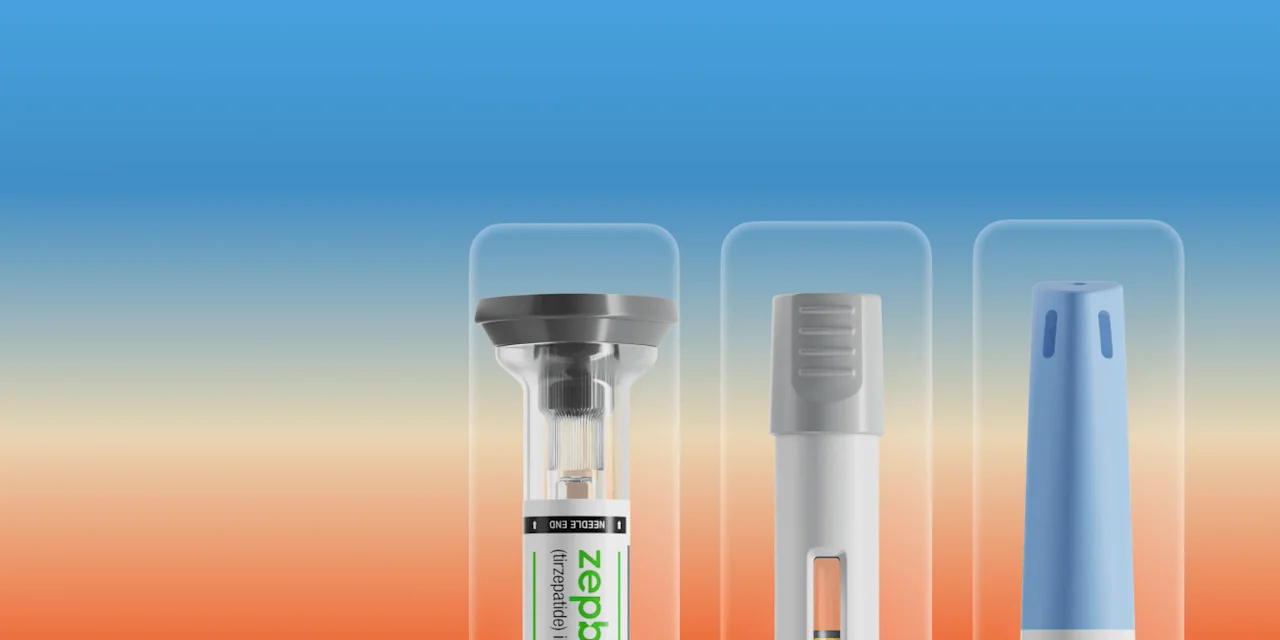Key takeaways
Prediabetes occurs when blood sugar levels are higher than normal but not high enough for a diabetes diagnosis.
Most people with prediabetes have no noticeable symptoms, but fatigue, increased thirst, frequent infections, blurred vision, and slow-healing sores are all possible symptoms that can happen when your blood sugar is too high.
Recognizing prediabetes signs and getting tested can help with earlier diagnosis so you can implement lifestyle changes that may prevent or delay type 2 diabetes.
Here's what we'll cover
Here's what we'll cover
Here's what we'll cover
Key takeaways
Prediabetes occurs when blood sugar levels are higher than normal but not high enough for a diabetes diagnosis.
Most people with prediabetes have no noticeable symptoms, but fatigue, increased thirst, frequent infections, blurred vision, and slow-healing sores are all possible symptoms that can happen when your blood sugar is too high.
Recognizing prediabetes signs and getting tested can help with earlier diagnosis so you can implement lifestyle changes that may prevent or delay type 2 diabetes.
Prediabetes is a health condition where blood sugar levels are higher than normal but not high enough to be diagnosed as type 2 diabetes. For most people, prediabetes does not have noticeable symptoms until it becomes diabetes.
That said, there are some symptoms you can experience with higher blood sugars. Thus, some people may notice subtle changes that can serve as early warning signs or may serve as a sign that they already have undiagnosed diabetes.
10 early signs of prediabetes
Again, most of the time, prediabetes has no symptoms or signs. Some of the common early signs of prediabetes and diabetes are symptoms that can be associated with higher blood sugars. These include:
1. Increased thirst
Increased thirst and the need to drink large amounts of water, also known as polydipsia, can be associated with elevated blood sugar levels, as seen in type 2 diabetes and prediabetes. When blood sugar is high, the kidneys work harder to remove the excess sugar through urine. This triggers increased urination, or polyuria. The overall fluid loss can lead to increased thirst as the body attempts to maintain proper hydration. Even in prediabetes, where blood sugar levels are higher than normal but not yet in the diabetic range, this mechanism can begin to occur, causing noticeable increases in thirst and fluid intake. Although increased thirst is not always associated with high blood sugar, increased urination and increased thirst can be early signs.
If you notice you’re drinking far more water than usual and still feeling thirsty, it’s worth discussing with a healthcare professional to rule out underlying causes.
2. Frequent urination
Another early sign of diabetes is frequent urination, or polyuria. High blood sugar causes the kidneys to filter out extra glucose. This extra glucose pulls water in with it, leading to increased urine production. Even in prediabetes, slightly elevated blood sugar can begin this process, resulting in more frequent trips to the bathroom.
This increased urine output can also have long-term effects on the bladder. The long-term effects of high blood sugar on the bladder are known as diabetic bladder dysfunction. Over time, people can experience symptoms like urinary incontinence (or not being able to control when you urinate), overflow incontinence (which is a specific type of incontinence when you experience leakage due to a full bladder), feeling like the bladder is not empty when you urinate, and even a weak urine stream or difficulty starting urination in the first place.
Research also shows that urinary incontinence is more common in women with diabetes than in women without it. This is only one of the reasons it’s important to keep your blood sugar under control.
If you notice that you’re waking up at night to urinate more often, or your bathroom habits have changed without another clear cause, it may be a sign to get your blood sugar checked.
3. Fatigue
Feeling unusually tired is one of the most common symptoms linked with diabetes. In fact, research found that nearly nine out of 10 people with prediabetes reported fatigue of some kind.
This tiredness can manifest in various ways, such as daytime fatigue and feeling exhausted after normal activities.
The study also found that fatigue levels tend to increase as blood sugar control worsens. Higher fasting blood sugar and HbA1c values were associated with more severe fatigue symptoms.
In another study comparing people with prediabetes to those with healthy blood sugar levels, fatigue scores were noticeably higher in the prediabetes group, even when age, gender, and weight were similar.
If you find yourself feeling persistently fatigued or dealing with mood shifts without another clear reason, it may be worth bringing up at your next check-up, since it could be an early clue to prediabetes.
4. Blurred vision
Blurred vision can appear in the prediabetes stage, even before diabetes is diagnosed, though it may often be subtle in the prediabetes phase. Studies show that people with prediabetes may already have measurable changes in how the retina functions, particularly in color vision and contrast sensitivity.
Large-scale research estimates that retinopathy affects between 0.3% and 14.1% of people with prediabetes, with a median prevalence of about 7%, more than double the rate seen in people with normal glucose levels (around 3%).
Researchers have found that people with prediabetes may already show thinning in specific layers of the retina, changes that could be linked to how blood vessels and oxygen supply in the eye are affected by higher blood sugar levels.
Because vision changes can progress quietly, reporting blurred vision during eye exams and routine check-ups is important for early prediabetes (and diabetes) detection and management.
5. Numbness or tingling in the feet or hands
Numbness, tingling, or a “pins and needles” feeling in the hands or feet can be an early sign of nerve changes linked to high blood sugar that can occur in prediabetes and diabetes. This happens because higher-than-normal blood sugar can damage small nerves over time.
The process is complex, but it often begins with extra glucose and fats putting stress on cells, which leads to inflammation and gradual nerve injury.
Research shows that nerve problems are more common in people with prediabetes than in those without it. In studies with a combined number of more than 9,300 participants, the number of people affected varied widely, but most reports found that at least one in 10 people with prediabetes experienced signs of nerve damage.
These nerve problems often start in the small fibers, which can explain early sensations like tingling or burning. If you notice persistent numbness or tingling, it’s important to mention it to your healthcare provider.
These symptoms may be one of the first physical warnings of prediabetes and a reason to get your blood sugar tested.
6. Frequent infections
Frequent infections are another health issue that some people can experience with high blood sugar. In diabetes, elevated glucose can weaken the body’s natural defenses by impairing immune cell function, slowing circulation, and disrupting the balance of bacteria in the body. This makes infections more common.
Emerging research suggests similar patterns may occur in prediabetes. For example, one study of adults without diabetes found that people with higher levels of Porphyromonas gingivalis, a bacterium associated with gum disease, were more likely to have prediabetes. This could mean gum infections could even help signal a blood sugar problem.
If you are experiencing increased infections, especially in the skin, gums, or even urinary tract infections, it may be worth asking your healthcare provider to check your blood sugar.
7. Slow-healing sores
In diabetes, high blood sugar affects the body’s first line of defense: the skin and immune system.
Cuts and sores (especially on the feet) may get infected more often because the skin barrier is weaker and blood flow is reduced.
When this barrier is weakened, even minor injuries like blisters or scrapes can turn into bigger problems, such as foot ulcers. This can be a problem because diabetes can also reduce your sensation in the feet, making it harder to notice if you are getting cuts and scrapes in the first place, so you may not even know to clean and disinfect the area.
High blood sugar also disrupts the function of immune cells. Studies show it can change the way key proteins and white blood cells fight bacteria, making it harder for the body to control infections.
This combination of poor skin defense, reduced sensation, and a slower immune response explains why wounds may linger rather than heal quickly. If you are noticing slower-healing wounds, especially on the feet, you should seek medical attention and ask your healthcare provider to check for diabetes or prediabetes.
8. Unintended weight changes
Unexpected weight loss or gain can be a sign that blood sugar levels are not well controlled.
On one hand, weight gain, especially around the waist, can make the body more resistant to insulin. Studies show that people who gain weight or see their waist-to-hip ratio increase over time are more likely to move from normal blood sugar to prediabetes or diabetes. Carrying excess fat around the midsection is especially linked to higher blood sugar risk.
Unintended weight loss may also be a cause for concern. In one study, people who lost about five kilograms or less before being diagnosed with type 2 diabetes were more likely to develop complications such as kidney or eye problems compared with those who did not lose weight.
This might be because when people are unable to use sugar for energy due to problems with insulin resistance, the body resorts to breaking down fat and muscle for energy. Additionally, in uncontrolled diabetes, people may end up losing glucose in the urine instead of using it for energy. However, the research is limited, and more studies are needed to fully understand this connection.
9. Appetite changes
Polyphagia, or excessive hunger, can be a symptom of both prediabetes and diabetes. When blood sugar is high, the body’s cells may not be able to use glucose effectively due to insulin resistance. As a result, even though there is plenty of sugar in the bloodstream, the cells are “starving” for energy, which can trigger hunger.
In prediabetes, this process may be subtle, and some people may notice only occasional increases in appetite. In type 2 diabetes, this hunger can become more pronounced, especially if high blood sugar persists. Additionally, people with blood sugar disorders may have altered signaling when it comes to hormones that control hunger (like ghrelin) or signal fullness (like peptide YY).
Unusual shifts in appetite, whether eating more or feeling less satisfied after meals, can provide helpful clues about underlying changes in metabolism.
10. Skin symptoms
Changes in the skin can sometimes be a visible sign of blood sugar problems. One of the most common is acanthosis nigricans, which may show up as patches of skin that look darker, are thicker, and feel velvety.
These patches are most often seen on the neck, underarms, or elbows. They generally develop when the body makes extra insulin, which stimulates skin cells to grow more quickly.
Because insulin resistance is linked to both obesity and type 2 diabetes, these skin symptoms may be considered an early marker of these conditions. In a study on young people, nearly half the participants with obesity were found to have this condition in at least one area of the body.
Skin symptoms like these can be a useful warning sign that it’s time to get your blood sugar checked. If you notice new or spreading patches of darkened, velvety skin, especially on the neck, elbows, or under the arms, let your healthcare provider know.
These signs don’t appear the same way for everyone, and some people may not notice any at all. Still, being aware of common early changes can make it easier to spot when it’s time to get checked.
Getting help from a professional
If you notice possible signs of prediabetes, the next step is to get tested. Several simple blood tests can check your blood sugar levels:
Fasting blood glucose test after not eating for about 12 hours. Levels between 100 and 125 mg/dL suggest prediabetes.
Oral glucose tolerance test, which measures blood sugar before and after drinking a glucose solution. Results between 140 and 199 mg/dL indicate prediabetes.
Hemoglobin A1C test, which shows average blood sugar over the past 2–3 months. Values between 5.7% and 6.4% fall in the prediabetes range.
Random plasma glucose test, which measures blood sugar at any time. This is usually used to detect diabetes, not prediabetes, but it can still provide valuable information. Elevated results may prompt your healthcare provider to perform additional testing with any of the three above methods.
Health experts recommend starting screening between the ages of 30 and 45 and repeating it every three years. If you have risk factors such as obesity, a family history of diabetes, or other health conditions, screening may need to start earlier and happen more often.
Early detection, gender, and lifestyle play a role
The good news is that early detection makes a difference. Evidence shows that catching prediabetes and making changes in diet, activity, and lifestyle can delay or even prevent type 2 diabetes.
Research also points to differences in how symptoms appear in men and women, which is why looking at symptoms of prediabetes in males and females separately can provide useful context.
That’s why it’s important to bring up concerns early, get the right tests when needed, and work with your healthcare provider to make healthy changes.
Prediabetes causes and risk factors
Prediabetes is the “warning stage” before type 2 diabetes. When blood sugar rises, the pancreas releases insulin to help move sugar into your cells for energy. But with long-term high sugar levels, the body’s cells stop responding to insulin as well as they should.
These insulin receptors don’t open up properly, so sugar stays in the bloodstream instead of fueling the body. This insulin resistance leads to even higher blood sugar, which can set off a chain reaction linked not only to type 2 diabetes but also to metabolic syndrome and other health problems.
In prediabetes, the process hasn’t advanced as far as in diabetes, but it’s already underway, which is why early action makes a big difference.
Risk factors for prediabetes include:
Carrying extra weight (especially a body mass index of over 25)
Having a parent or sibling with diabetes
A history of diabetes during pregnancy (gestational diabetes)
Belonging to a higher-risk ethnic group (African American, Latin, Native American, Asian American, or Pacific Islander)
High blood pressure
Low physical activity levels
Unhealthy cholesterol or triglyceride levels (low HDL, high triglycerides)
Bottom line: Early warning signs of prediabetes
Prediabetes doesn’t usually cause noticeable changes, but when it does, paying attention to the signals your body sends can make a difference. So, what are the warning signs of prediabetes or signs that you may have undiagnosed diabetes?
Thirst and urination changes: Needing to drink more water or urinate more often than usual can be early prediabetic symptoms, especially if they happen without another clear cause.
Fatigue and blurred vision: Feeling constantly tired or noticing changes in vision may indicate that blood sugar levels are affecting energy use and eye health.
Numbness, tingling, or infections: Problems such as tingling in the hands or feet, frequent infections, or slow-healing sores are common signs of diabetes and possibly prediabetes that shouldn’t be ignored.
Weight and appetite changes: Unintended weight gain, weight loss, or shifts in appetite may also serve as early red flags.
Skin symptoms: Dark, velvety patches on the neck, underarms, or other areas may point to insulin resistance and are among the visible symptoms of prediabetes and diabetes.
While there are other reasons you could be experiencing these symptoms, it’s important to keep in mind that they could be due to high blood sugar because early detection matters. If you notice any of these changes or have risk factors, it’s worth discussing blood sugar testing with your healthcare provider. Even small lifestyle adjustments can reduce your risk of progressing to diabetes and help keep your health on track.
Frequently asked questions (FAQs)
Can prediabetes go away with exercise?
Yes, exercise can play an important role in managing prediabetes. Research shows that regular physical activity helps improve blood sugar control, body weight, cholesterol, and blood pressure compared with no exercise.
Both aerobic activity (like brisk walking or cycling) and resistance training (like weightlifting or bodyweight exercises) have shown benefits, and combining the two may be especially helpful.
Can you reverse prediabetes?
Yes, in some cases, you can reverse prediabetes. Research shows that lifestyle changes like eating healthier and getting regular exercise give people the best chance of bringing blood sugar levels back to normal. While taking medication may also help, the evidence is clearest for lifestyle changes. Follow the recommendations of your healthcare provider as they will be personalized to your specific circumstances.
How long does it take for prediabetes to turn into diabetes?
There isn’t a single timeline, since the risk of developing diabetes varies from person to person. Studies show that about 5–10% of people with prediabetes develop diabetes each year, though the rate depends on factors like age and weight.
Over the long term, up to 70% of people with prediabetes may eventually develop type 2 diabetes. These numbers highlight why regular check-ups and early lifestyle changes are important if you’ve been told you have prediabetes.
What is the best diet for prediabetes?
The best diet for prediabetes includes vegetables, fruits, whole grains, legumes, nuts, and healthy fats such as those in plant-forward approaches. Aim to reduce refined carbohydrates, added sugars, and processed foods.
Dietary changes work best when they’re realistic and balanced, and can be maintained over time, rather than focusing on short-term restrictions.
DISCLAIMER
If you have any medical questions or concerns, please talk to your healthcare provider. The articles on Health Guide are underpinned by peer-reviewed research and information drawn from medical societies and governmental agencies. However, they are not a substitute for professional medical advice, diagnosis, or treatment.
References
Alvarez, S., Coffey, R., Mathias, P. M., et al. (2023). Prediabetes. StatPearls. Retrieved on Sept. 22, 2025, from https://www.ncbi.nlm.nih.gov/books/NBK459332/
Bodman, M. A., Dreyer, M. A., Varacallo, M. A. (2024). Diabetic peripheral neuropathy. StatPearls. Retrieved on Sept. 22, 2025, from https://www.ncbi.nlm.nih.gov/books/NBK442009/
Christ-Crain, M. & Gaisl, O. (2021). Diabetes insipidus. Presse medicale, 50(4), 104093. doi:10.1016/j.lpm.2021.104093. Retrieved from https://pubmed.ncbi.nlm.nih.gov/34718110/
Daneshgari, F., Liu, G., Birder, L., et al. (2009). Diabetic bladder dysfunction: current translational knowledge. The Journal of urology, 182(6 Suppl), S18–S26. doi:10.1016/j.juro.2009.08.070. Retrieved from https://pmc.ncbi.nlm.nih.gov/articles/PMC4684267/
Demmer, R. T., Jacobs, D. R., Jr, Singh, R., et al. (2015). Periodontal Bacteria and Prediabetes Prevalence in ORIGINS: The Oral Infections, Glucose Intolerance, and Insulin Resistance Study. Journal of dental research, 94(9 Suppl), 201S–11S. doi:10.1177/0022034515590369. Retrieved from https://pmc.ncbi.nlm.nih.gov/articles/PMC4547206/
Echouffo-Tcheugui, J. B. & Selvin, E. (2021). Prediabetes and What It Means: The Epidemiological Evidence. Annual review of public health, 42, 59–77. doi:10.1146/annurev-publhealth-090419-102644. Retrieved from https://pmc.ncbi.nlm.nih.gov/articles/PMC8026645/
Engin, S., Akkan, T., Dağdeviren, M., et al. (2022). Are disease-related symptoms important to predicting developing diabetes from prediabetes?. Turkish journal of medical sciences, 52(4), 1093–1102. doi:10.55730/1300-0144.5412. Retrieved from https://pmc.ncbi.nlm.nih.gov/articles/PMC10388077/
Gómez-Flores, M., González-Saldivar, G., Santos-Santos, O., et al. (2015). Implications of a clinically ignored site of acanthosis nigricans: the knuckles. Experimental and clinical endocrinology & diabetes : official journal, German Society of Endocrinology [and] German Diabetes Association, 123(1), 27–33. doi:10.1055/s-0034-1387732. Retrieved from https://pubmed.ncbi.nlm.nih.gov/25314648/
González-Saldivar, G., Rodríguez-Gutiérrez, R., Ocampo-Candiani, J., et al. (2017). Skin Manifestations of Insulin Resistance: From a Biochemical Stance to a Clinical Diagnosis and Management. Dermatology and therapy, 7(1), 37–51. doi:10.1007/s13555-016-0160-3. Retrieved from https://pmc.ncbi.nlm.nih.gov/articles/PMC5336429/
Holt, R. I. G., Cockram, C. S., Ma, R. C. W., et al. (2024). Diabetes and infection: review of the epidemiology, mechanisms and principles of treatment. Diabetologia, 67(7), 1168–1180. doi:10.1007/s00125-024-06102-x. Retrieved from https://pmc.ncbi.nlm.nih.gov/articles/PMC11153295/
Karson, N., Smith, J., Jones, M., et al. (2020). Functional retinal outcomes in patients with prediabetes and type 2 diabetes. Ophthalmic & physiological optics : the journal of the British College of Ophthalmic Opticians (Optometrists), 40(6), 770–777. doi:10.1111/opo.12733. Retrieved from https://pmc.ncbi.nlm.nih.gov/articles/PMC7606818/
Kautzky-Willer, A., Leutner, M., Abrahamian, H., et al. (2023). Sex and gender-specific aspects in prediabetes and diabetes mellitus-clinical recommendations (Update 2023). Wiener klinische Wochenschrift, 135(Suppl 1), 275–285. doi:10.1007/s00508-023-02185-5. Retrieved from https://pubmed.ncbi.nlm.nih.gov/37101049/
Kirthi, V., Nderitu, P., Alam, U., et al. (2022). The prevalence of retinopathy in prediabetes: A systematic review. Survey of ophthalmology, 67(5), 1332–1345. doi:10.1016/j.survophthal.2022.04.002. Retrieved from https://pubmed.ncbi.nlm.nih.gov/35430245/
Kirthi, V., Perumbalath, A., Brown, E., et al. (2021). Prevalence of peripheral neuropathy in pre-diabetes: a systematic review. BMJ open diabetes research & care, 9(1), e002040. doi:10.1136/bmjdrc-2020-002040. Retrieved from https://pubmed.ncbi.nlm.nih.gov/34006607/
Lifford, K. L., Curhan, G. C., Hu, F. B., et al. (2005). Type 2 diabetes mellitus and risk of developing urinary incontinence. Journal of the American Geriatrics Society, 53(11), 1851–1857. doi:10.1111/j.1532-5415.2005.53565.x. Retrieved from https://pubmed.ncbi.nlm.nih.gov/16274364/
Orbetzova, M. (2012). Appetite Regulatory Peptides and Insulin Resistance. InTech. doi: 10.5772/50977. Retrieved from https://www.intechopen.com/chapters/41434
Peng, R. P., Zhu, Z. Q., Shen, H. Y., et al. (2022). Retinal Nerve and Vascular Changes in Prediabetes. Frontiers in medicine, 9, 777646. doi:10.3389/fmed.2022.777646. Retrieved from https://pmc.ncbi.nlm.nih.gov/articles/PMC8891539/
Rhee, E. J., Choi, J. H., Yoo, S. H., et al. The association of unintentional changes in weight, body composition, and homeostasis model assessment index with glycemic progression in non-diabetic healthy subjects. Diabetes & metabolism journal, 35(2), 138–148. doi:10.4093/dmj.2011.35.2.138. Retrieved from https://pmc.ncbi.nlm.nih.gov/articles/PMC3122898/
Tabák, A. G., Herder, C., Rathmann, W., et al. (2012). Prediabetes: a high-risk state for diabetes development. Lancet (London, England), 379(9833), 2279–2290. doi:10.1016/S0140-6736(12)60283-9. Retrieved from https://pmc.ncbi.nlm.nih.gov/articles/PMC3891203/
Thaiss, C. A., Levy, M., Grosheva, I., et al. (2018). Hyperglycemia drives intestinal barrier dysfunction and risk for enteric infection. Science (New York, N.Y.), 359(6382), 1376–1383. doi:10.1126/science.aar3318. Retrieved from https://pubmed.ncbi.nlm.nih.gov/29519916/
Topaloğlu, U. S. & Erol, K. (2022). Fatigue, anxiety and depression in patients with prediabetes: a controlled cross-sectional study. Diabetology international, 13(4), 631–636. doi:10.1007/s13340-022-00583-0. Retrieved from https://pmc.ncbi.nlm.nih.gov/articles/PMC9477980/
Yang, S., Wang, S., Yang, B., et al. Weight loss before a diagnosis of type 2 diabetes mellitus is a risk factor for diabetes complications. Medicine, 95(49), e5618. doi:10.1097/MD.0000000000005618. Retrieved from https://pmc.ncbi.nlm.nih.gov/articles/PMC5266063/
Yau, J. W., Thor, S. M., Ramadas, A. (2020). Nutritional Strategies in Prediabetes: A Scoping Review of Recent Evidence. Nutrients, 12(10), 2990. doi:10.3390/nu12102990. Retrieved from https://pmc.ncbi.nlm.nih.gov/articles/PMC7650618/
Zhang, H., Guo, Y., Hua, G., et al. (2024). Exercise training modalities in prediabetes: a systematic review and network meta-analysis. Frontiers in endocrinology, 15, 1308959. doi:10.3389/fendo.2024.1308959. Retrieved from https://pmc.ncbi.nlm.nih.gov/articles/PMC10911289/
Zhou, K. & Lansang, M. C. (2024). Diabetes Mellitus and Infection. Endotext. Retrieved on Sept. 22, 2025, from https://www.ncbi.nlm.nih.gov/books/NBK569326/
Ziegler, D., Herder, C., Papanas, N. (2023). Neuropathy in prediabetes. Diabetes/metabolism research and reviews, 39(8), e3693. doi:10.1002/dmrr.3693. Retrieved from https://pubmed.ncbi.nlm.nih.gov/37470302/













